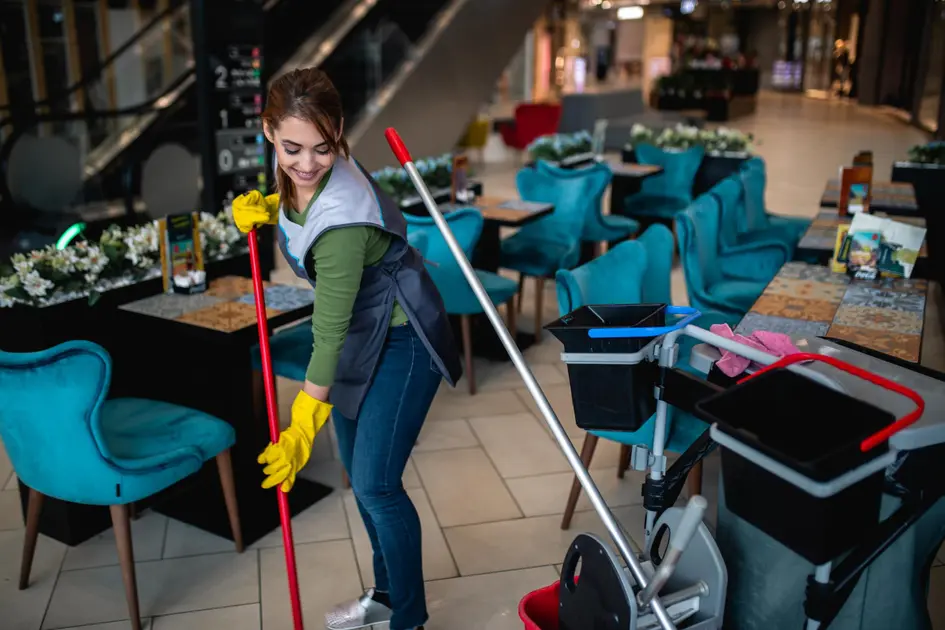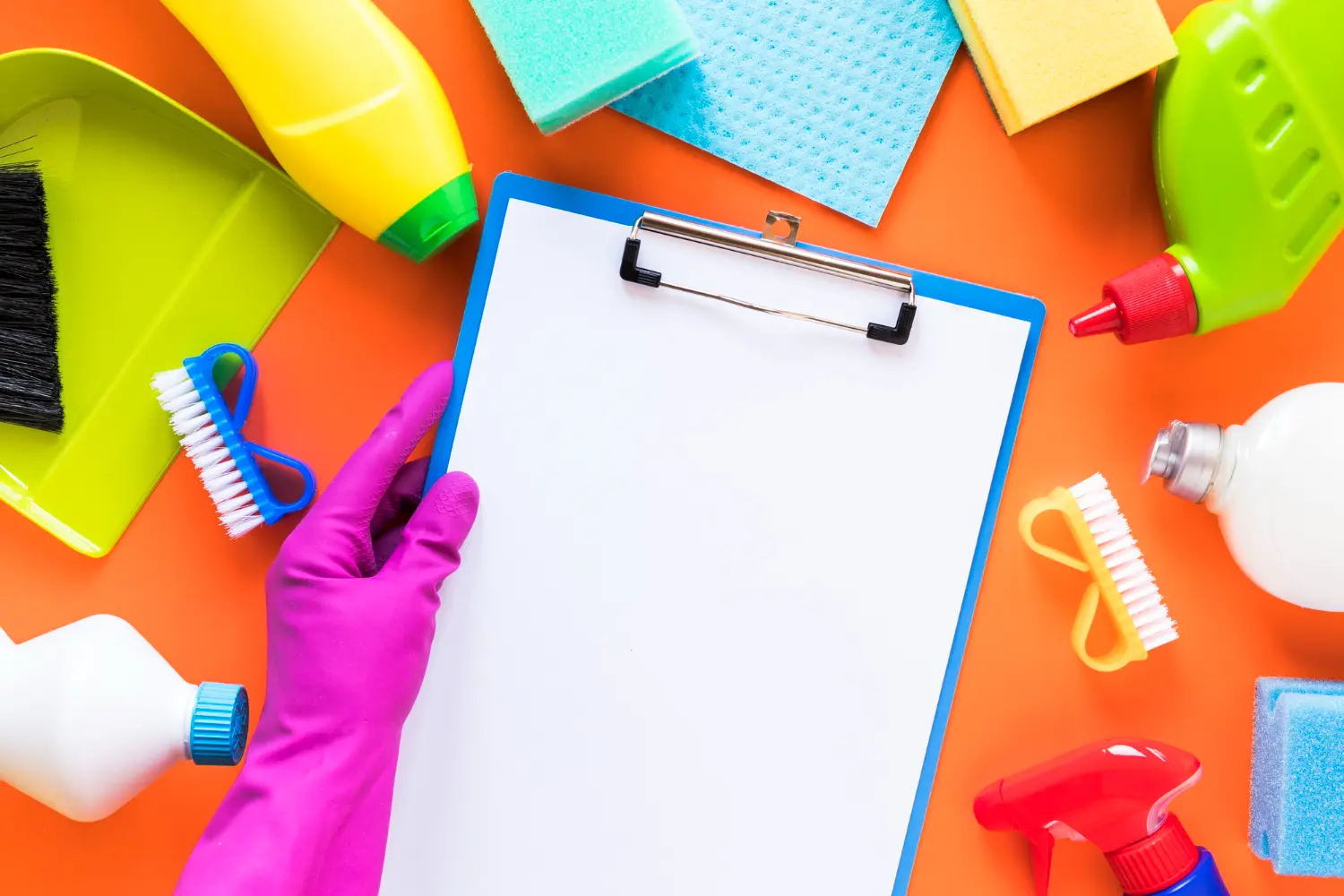
Retail shop cleaning is an integral part of maintaining a successful storefront. Not only does it influence customer perceptions, but it also affects health and safety. A clean retail environment can enhance the customer experience, contribute to employee morale, and play a vital role in the longevity of the products being sold.
Table of contents [Show]
The importance of cleanliness in retail settings cannot be overstated. From small boutique stores to large department stores, a clean shopping environment attracts more customers and encourages them to stay longer, increasing the likelihood of purchases. Cleanliness reflects on a brand’s reputation and instills trust in consumers that the products they are buying have been handled and displayed in a hygienic manner.

In this article, we will explore all the facets of retail shop cleaning, including daily tasks, deep cleaning procedures, maintenance of different areas within a shop, and best practices for ensuring a consistently clean and welcoming environment.
Efficient and thorough daily cleaning routines are essential for any retail establishment to ensure a pleasant shopping experience. It begins before the doors even open to the public. A key task is to dust and clean all surfaces, including shelves, product displays, and fixtures, to keep the store looking fresh and inviting. Vacuuming or sweeping should be done to remove any dirt and debris from the floors, with attention to carpets and rugs which can harbor allergens and dirt.
Sanitization measures, especially in today's climate, have become increasingly important. High-touch areas like door handles, counters, and cash registers must be regularly disinfected to prevent the spread of germs. This process includes using approved cleaning agents that are both effective and safe for customers and staff.
Restocking cleaning supplies, such as hand sanitizer for customer use, further emphasizes a commitment to cleanliness and health. Trash removal is a critical and often underappreciated aspect of daily routines, requiring diligence to maintain an odor-free and visually appealing environment.
Employees should be trained to manage spills and messes quickly to maintain safety and avoid any accidents. Finally, window cleaning is an often-overlooked aspect of daily cleaning, yet clean windows can make a significant difference in ambient lighting and overall external appearance.
By adhering to a checklist, businesses can ensure that each of these important tasks is accomplished efficiently each day. These cleaning routines not only maintain the aesthetic appeal of a retail store but also contribute to a sanitary environment that promotes the health and safety of both customers and employees.
Deep cleaning extends far beyond the scope of the daily routine; it involves a meticulous approach to every corner of the retail space. Carpet cleaning should be performed with industrial-grade equipment, such as steam cleaners, to remove ingrained dirt and potential pathogens, thus extending the life of the carpet and maintaining a fresh appearance. The process requires moving fixtures and displays to reach every area, ensuring a comprehensive clean.
Floor waxing is another crucial aspect. Not only does waxing leave a glossy and attractive finish, it also protects the flooring from wear and tear, particularly in high traffic areas. The selection of the right wax and application method is vital for achieving the best results and depends on the type of flooring material.
Restroom sanitization is paramount in a retail environment, demanding specialized cleaning agents and protocols to ensure a germ-free and odorless space. Restrooms should be deep cleaned regularly to uphold hygiene standards and customer comfort.
High shelves and lighting fixtures accumulate dust and grime over time and often go unnoticed. Regular maintenance of these areas not only contributes to the overall cleanliness of the store but also helps to preserve the functionality and longevity of the lighting systems.
By routinely conducting these deep cleaning tasks, retailers can ensure that every aspect of their space is as clean as possible, thus safeguarding the shopping experience, the store's merchandise, and the brand's reputation.
Retail environments are known for their diverse materials and surfaces, which all necessitate tailored cleaning approaches. For glass components, such as display cases and windows, using a streak-free glass cleaner alongside a microfiber cloth ensures maximum transparency and shine without leaving residue. When it comes to wooden surfaces, they require cleaners that are specifically designed to nourish the wood while maintaining its natural luster, and it is often advisable to follow up with a protective polish.
Metal surfaces, often found in fixtures and architectural details, can be polished with solutions intended for the specific type of metal – whether it be stainless steel, brass, or aluminum – to prevent corrosion and keep the surfaces gleaming. In handling all materials, especially the more delicate ones, it is important to avoid abrasive tools or harsh chemicals that can damage the finishes. Regular cleaning and prompt attention to spills and fingerprints are key in preserving the aesthetic and structural integrity of these specialized areas. By implementing a routine that respects the unique characteristics of each material, retailers can maintain a pristine shopping environment that reflects quality and attention to detail.
Maintaining high standards of health, safety, and hygiene is critical in the retail sector, not only for the well-being of customers and employees but also for sustaining the store's brand image. The careful selection of cleaning chemicals plays a pivotal role in this, as agents must be potent enough to eliminate pathogens without posing a risk to human health or damaging merchandise. Retailers must be wise to choose FDA or EPA-approved disinfectants and ensure staff are trained in safely handling and using these substances.

Additionally, the adoption of health and safety practices, such as the use of protective equipment (e.g., gloves, masks) during cleaning processes, helps prevent cross-contamination and protect workers from exposure to harmful chemicals. These measures, coupled with regular handwashing and providing accessible hand sanitizing stations, fortify the store's defense against the spread of illness.
Compliance with governmental health codes and standards is non-negotiable. Regular inspections and adherence to regulations such as OSHA (Occupational Safety and Health Administration) in the US ensure that retail environments meet all legal requirements, thereby instilling confidence in consumers that the store prioritizes their health. This sincerity towards health and safety not only enhances the customer experience but also serves as a benchmark for industry best practices. By consistently upholding these values, retailers can foster a safe shopping atmosphere while mitigating risks and promoting public health.
In today's eco-conscious world, sustainable cleaning practices play a vital role in the retail industry, aiming to reduce the ecological footprint while maintaining high cleanliness standards. Utilizing environmentally-friendly cleaning agents that are biodegradable and free from toxic chemicals is key to this effort. These green products are not only safer for the environment but also for the employees and customers interacting with treated surfaces.
Equally important is the selection of energy-efficient cleaning equipment which conserves power and reduces greenhouse gas emissions. Microfiber cloths and mops, for instance, minimize the need for cleaning solutions and water, while also trapping more dirt and dust than traditional fibers.
Furthermore, retailers are adopting methods like concentrated cleaning solutions which require less packaging and decrease transportation carbon emissions. Proper training on the use of these concentrates ensures that employees use only the necessary amount, preventing waste and further extending the life of the cleaning product.
By embracing these sustainable practices, retailers can lead by example, demonstrating their commitment to preserving the environment while still providing a clean and safe shopping experience.
Effective implementation of cleaning standards in a retail environment hinges significantly on comprehensive staff training and well-structured cleaning protocols. Retail employees should undergo regular training sessions that not only introduce them to the proper use of cleaning agents and equipment but also emphasize the importance of cleaning as a component of customer service and store image. Cleaning protocols, on the other hand, serve as step-by-step guidesthat ensure consistency and thoroughness in the cleaning process.
Within these protocols, detail is key – from outlining the frequency of tasks to the specific methods for tackling different areas and surfaces. This ensures that employees can carry out their duties effectively, regardless of their previous experience. Furthermore, checklists and schedules aid in keeping track of completed tasks, ensuring all aspects of the store are regularly addressed.
To adapt to the dynamic retail environment, protocols must be flexible, accounting for variable factors such as store layout changes, seasonal displays, and the introduction of new products or materials. By ensuring that staff are well-trained and equipped with a robust framework for cleanliness, retailers can empower their teams to maintain an impeccable shopping environment that meets the highest standards of hygiene and customer satisfaction.
The retail industry continues to benefit from advancements in cleaning technology that enhance efficiency and effectiveness. For example, automated cleaning robots are being increasingly used for floor care, allowing staff to focus on high-touch and detailed areas. Additionally, the use of ultraviolet (UV) light sanitation methods is gaining popularity as a means of disinfection without the use of harsh chemicals.
Retailers should also consider investing in smart dispensing systems that precisely measure cleaning solutions, helping to reduce waste while ensuring the correct dilution ratios for maximum effectiveness. IoT sensors can be installed to monitor cleanliness and stock levels of supplies, alerting management when attention is needed. By leveraging these state-of-the-art advancements, retail establishments can stay at the forefront of cleanliness, creating safe and welcoming environments for consumers.
In conclusion, the adoption of health and safety practices, compliance with regulations, sustainable cleaning practices, staff training and cleaning protocols, and advancements in technology all work together to ensure a clean and healthy retail environment. By prioritizing these aspects of cleanliness, retailers can not only provide an enjoyable shopping experience for their customers but also promote overall public health and set industry standards for excellence.